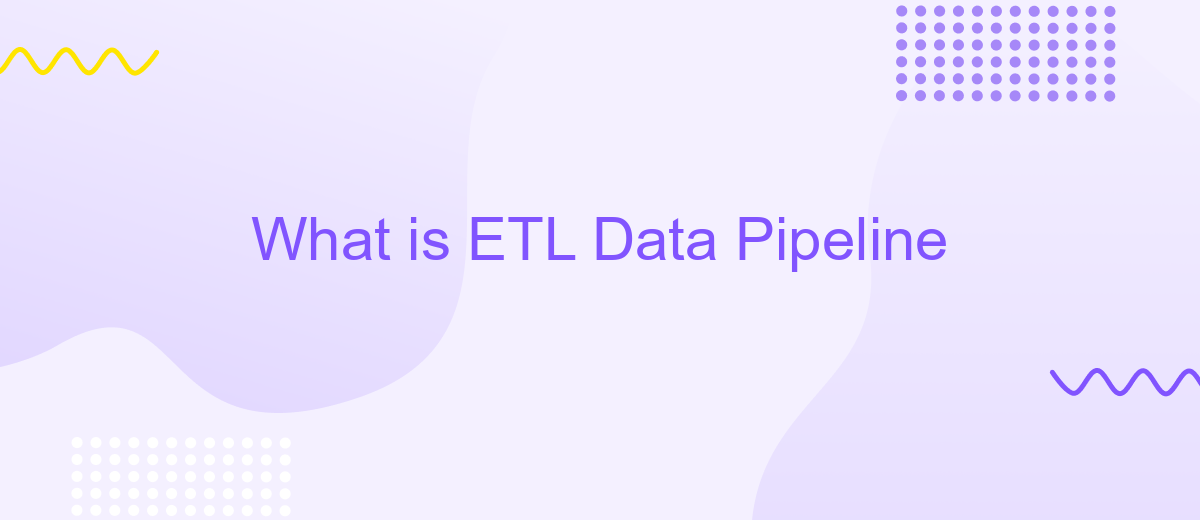What is ETL Data Pipeline
An ETL (Extract, Transform, Load) data pipeline is a critical component in modern data management and analytics. It involves extracting data from various sources, transforming it into a suitable format, and loading it into a target system for analysis. This process ensures data is clean, consistent, and ready for insightful decision-making, driving business intelligence and operational efficiency.
Introduction
ETL (Extract, Transform, Load) Data Pipeline is a critical process in the world of data management and analytics. It involves extracting data from various sources, transforming it to fit operational needs, and loading it into a destination database or data warehouse. This process ensures that data is accurate, consistent, and accessible for analysis and decision-making.
- Extract: Gathering data from multiple sources.
- Transform: Converting data into a usable format.
- Load: Storing the transformed data into a target system.
Setting up an ETL data pipeline can be complex, but tools like ApiX-Drive simplify the integration process. ApiX-Drive allows seamless connections between various data sources and destinations, automating the data flow and ensuring real-time updates. This not only saves time but also reduces the risk of errors, making it easier for businesses to maintain a robust data infrastructure.
ETL Process Overview

The ETL (Extract, Transform, Load) process is a fundamental component of data integration and management, enabling organizations to consolidate data from multiple sources into a single, unified view. The process begins with the extraction phase, where data is collected from various sources such as databases, APIs, and flat files. This raw data is then transformed to meet the specific requirements of the target system. Transformations may include data cleaning, normalization, aggregation, and enrichment, ensuring that the data is accurate and consistent.
Once the data has been transformed, it is loaded into the target system, which could be a data warehouse, data lake, or another storage solution. Efficient ETL processes are crucial for maintaining data quality and enabling timely data analysis. Tools like ApiX-Drive can simplify the integration and automation of ETL workflows by providing pre-built connectors and an intuitive interface for setting up data pipelines. This ensures that data is seamlessly transferred and transformed, allowing businesses to focus on deriving insights and making informed decisions.
Components of an ETL Pipeline

An ETL (Extract, Transform, Load) pipeline is a critical component in data management that ensures the seamless flow of data from various sources to a destination system, typically a data warehouse or data lake. It involves several key components that work together to facilitate this process efficiently.
- Data Extraction: This is the initial stage where data is collected from different sources such as databases, APIs, and files. Tools like ApiX-Drive can be used to automate and streamline this process, ensuring that data is accurately pulled from various integrated sources.
- Data Transformation: In this phase, the extracted data is cleaned, formatted, and transformed to meet the requirements of the target system. This may involve data cleaning, normalization, enrichment, and aggregation to ensure consistency and usability.
- Data Loading: The final step involves loading the transformed data into the target system. This could be a database, data warehouse, or data lake, where the data is stored for analysis and reporting. Efficient loading mechanisms are crucial to maintain data integrity and performance.
Each component of an ETL pipeline plays a vital role in ensuring that data is accurately and efficiently processed from the source to the destination. Leveraging tools like ApiX-Drive can significantly enhance the automation and integration capabilities, making the ETL process more robust and reliable.
Benefits and Challenges of ETL

ETL (Extract, Transform, Load) data pipelines offer numerous benefits for businesses looking to manage and analyze large volumes of data efficiently. By automating the data extraction from various sources, transforming it into a suitable format, and loading it into a data warehouse, companies can streamline their data operations and improve decision-making processes. This automation reduces the need for manual data handling, minimizing errors and saving valuable time.
However, implementing ETL pipelines also comes with its own set of challenges. The complexity of integrating multiple data sources, ensuring data quality, and maintaining the pipeline can be daunting. Additionally, the initial setup and ongoing maintenance require significant technical expertise and resources.
- Data consistency and accuracy
- Time-saving through automation
- Improved decision-making capabilities
- Scalability to handle large data volumes
To mitigate these challenges, businesses can leverage integration services like ApiX-Drive, which simplify the process of connecting various data sources and automating workflows. Such tools can significantly reduce the technical burden, allowing companies to focus on deriving insights from their data rather than managing the pipeline itself.


Best Practices for ETL Implementation
Implementing an ETL data pipeline requires careful planning and execution to ensure data integrity and efficiency. Start by clearly defining your data sources, transformation rules, and destination systems. Use modular design principles to break down the pipeline into manageable components, which makes it easier to maintain and troubleshoot. Automate the ETL process to reduce manual errors and improve consistency. Tools like ApiX-Drive can help streamline these integrations, allowing for seamless data flow between various systems.
Monitoring and logging are crucial for maintaining the health of your ETL pipeline. Implement comprehensive logging to capture detailed information about each stage of the ETL process. This will aid in diagnosing issues quickly and accurately. Regularly review and update your ETL processes to adapt to changing data requirements and system updates. Finally, ensure robust data security measures are in place to protect sensitive information throughout the ETL process. Following these best practices will help you build a reliable and efficient ETL data pipeline.
FAQ
What is an ETL Data Pipeline?
Why is ETL important for data processing?
What are the main components of an ETL Data Pipeline?
How can I automate an ETL Data Pipeline?
What are common challenges in setting up an ETL Data Pipeline?
Strive to take your business to the next level, achieve your goals faster and more efficiently? Apix-Drive is your reliable assistant for these tasks. An online service and application connector will help you automate key business processes and get rid of the routine. You and your employees will free up time for important core tasks. Try Apix-Drive features for free to see the effectiveness of the online connector for yourself.

